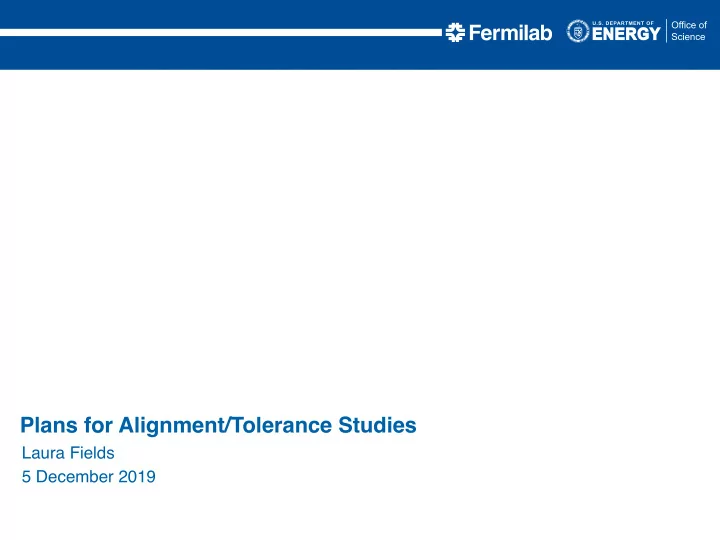

Plans for Alignment/Tolerance Studies Laura Fields 5 December 2019
Introduction - We estimate alignment and focusing-related flux uncertainties by simulating neutrino fluxes with various alignment parameters changed by their tolerances - This has been done many times now • First in 2014, then again for the CDR and most recently by Luke Pickering for the TDR • These studies are major Luke undertakings, requiring a lot Pickering of CPU hours and a lot of disk space, so we only do them when needed. • But now we need to do it again! � 2 20 Sept 2019
Why Do a New Alignment Study - Past studies have been insufficient in various ways • To conserve disk space, we have often only saved neutrino energy spectra at the near and far detector - But now we have a near detector that will sit at many off axis positions - People have also requested uncertainties versus neutrino angle - We also need to understand how signals in the muon alcoves change when alignment parameters are varied - Near detector group studying beam monitoring wants full flux ntuple s, not just energy spectra • Our understanding of important alignment parameters has evolved with time , and past studies have not included all variations that we think are important • The beam design has undergone some significant changes since the last study - Shortened target - Small changes to horn design - Most significant (for muon monitor studies): Simplification of hadron absorber - So we are preparing for a new round of simulations to simulate alignment tolerance variations • Will build a bank of flux tuples that can be used for flux, ND and muon monitor studies • But we are doing some careful planning so that it hopefully won’t have to be repeated soon • First step of preparation: establish which parameters we want to simulate � 3 20 Sept 2019
List of Parameters to Vary 2014 2019 New list is based on brainstorming session with Jim Hylen and me � 4 20 Sept 2019
Questions - Some outstanding questions • What exactly is the uncertainty on POT counting - Is it from the toroids alone, or are there additional factors here (e.g. detector readout window) • Should we treat target and horn alignment as independent , or shift them together? • How to handle baffle scraping - What ‘baffle scraping’ means: We simulate a gaussian beam. In reality the beam will have non-gaussian tails. How much of these tails are hitting the baffle/bafflet and producing neutrinos? - Have traditionally assumed < .25 % of beam is hitting baffle - How should this be extrapolated to the new baffle/bafflet configuration � 5 20 Sept 2019
Next Steps - Other things to consider before we start simulating: • How can we store all of the information we need with minimal disk foot print - See talk from Pierce Weatherly • What geometry updates do we want to make first - See talk on Tyler Rehak � 6 20 Sept 2019
The End � 7 20 Sept 2019
Recommend
More recommend